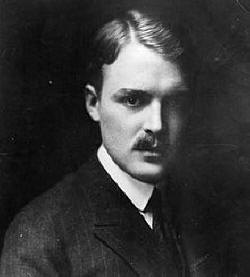

Queer Places:
Chapelle de la Paix, Avenue des Pins, 98000 Monaco
 Prince
Pierre of Monaco, Duke of Valentinois (24 October 1895 – 10 November 1964) was
the father of Rainier III of Monaco. He was a promoter of art, music, and
literature in Monaco and served as the head of the country's delegation to the
United Nations Educational, Scientific, and Cultural Organization (UNESCO) and
to the International Olympic Committee.
Prince
Pierre of Monaco, Duke of Valentinois (24 October 1895 – 10 November 1964) was
the father of Rainier III of Monaco. He was a promoter of art, music, and
literature in Monaco and served as the head of the country's delegation to the
United Nations Educational, Scientific, and Cultural Organization (UNESCO) and
to the International Olympic Committee.
Born at the Château de Kerscamp, Hennebont, Morbihan, France, as Count Pierre Marie Xavier Raphaël Antoine Melchior de Polignac, he was the fourth son and youngest child of Count Maxence Melchior Edouard Marie Louis de Polignac (1857–1936) and his Mexican-born wife, Susana de la Torre y Mier (1858–1913), whom he wed in Paris in 1881.[1] He was a first cousin twice removed of major-general Camille Armand Jules Marie, Prince de Polignac, and nephew of the Mexican politician Ignacio de la Torre y Mier y Teran.
He married civilly on 19 March and religiously on 20 March 1920, in Monaco, Princess Charlotte of Monaco, the illegitimate but adopted daughter of Louis II of Monaco by Marie Juliette Louvet.[2] Pierre de Polignac, member of a cadet branch of one of France's most renowned ducal families,[3] noble since at least the 12th century, duke in 1780, peer in 1817,[4] and a descendant of Marie Antoinette's favourite, Yolande de Polastron, duchesse de Polignac, changed his name and coat of arms to those borne by the House of Grimaldi by Monegasque ordinance issued on 18 March 1920 the day before his wedding.[2] He had become a subject of the Sovereign Prince of Monaco, also by Monegasque ordinance, on 29 February 1920.[2] From the date of the religious wedding the court of Monaco referred to him, jure uxoris, as Duke of Valentinois. That title had been conferred upon his wife as heiress presumptive on 20 May 1919.[2] His surname and arms were altered by Monegasque ordinance shortly after he became a Monegasque citizen to ensure that his dynastic issue would bear the surname of Grimaldi in compliance with Article I of Monaco's house law.[5] Pierre remained in succession to the French title of Duke of Polignac, as do his legitimate male-line descendants.
According to James Lees-Milne, a British writer and friend of the Prince, Prince Pierre's unhappy arranged marriage was complicated by his homosexuality and Princess Charlotte's affairs.[6] In the mid-1920s, the couple unofficially separated, with Prince Pierre living in his Paris apartment and on an estate near the city.[7] Prince Pierre and Princess Charlotte were judicially separated on 20 March 1930 at Paris, and in a case titled "Princesse héréditaire Grimaldi de Monaco c. Prince Pierre Grimaldi de Polignac" were divorced by ordinance of Prince Louis II on 18 February 1933. The divorce was confirmed by a Paris tribunal in December of that year.[2][8] One magazine story reported that "The union ended ... under circumstances which prompted the temperamental father-in-law to vow he would call out the Monégasque army if the prince ever set foot in the principality again."[9] The banishment from Monaco was lifted in April 1933, and Prince Pierre thereafter received an annuity of 500,000 francs a year.[10][11]
He and his wife had two children:[2]
Prince Pierre died on 10 November 1964, of cancer, at the American Hospital in Neuilly-sur-Seine, Paris, France.[12]
Life magazine in 1947 described Prince Pierre as "a slender and graceful gallant who wears his coat cape-fashion across his shoulders. His manners are exquisite; his voice so cultivated as to be practically inaudible".[9]
My published books: